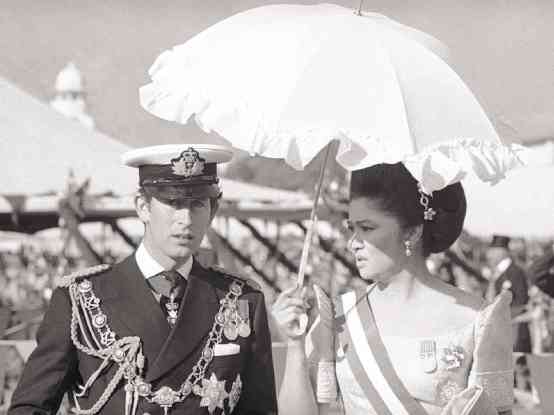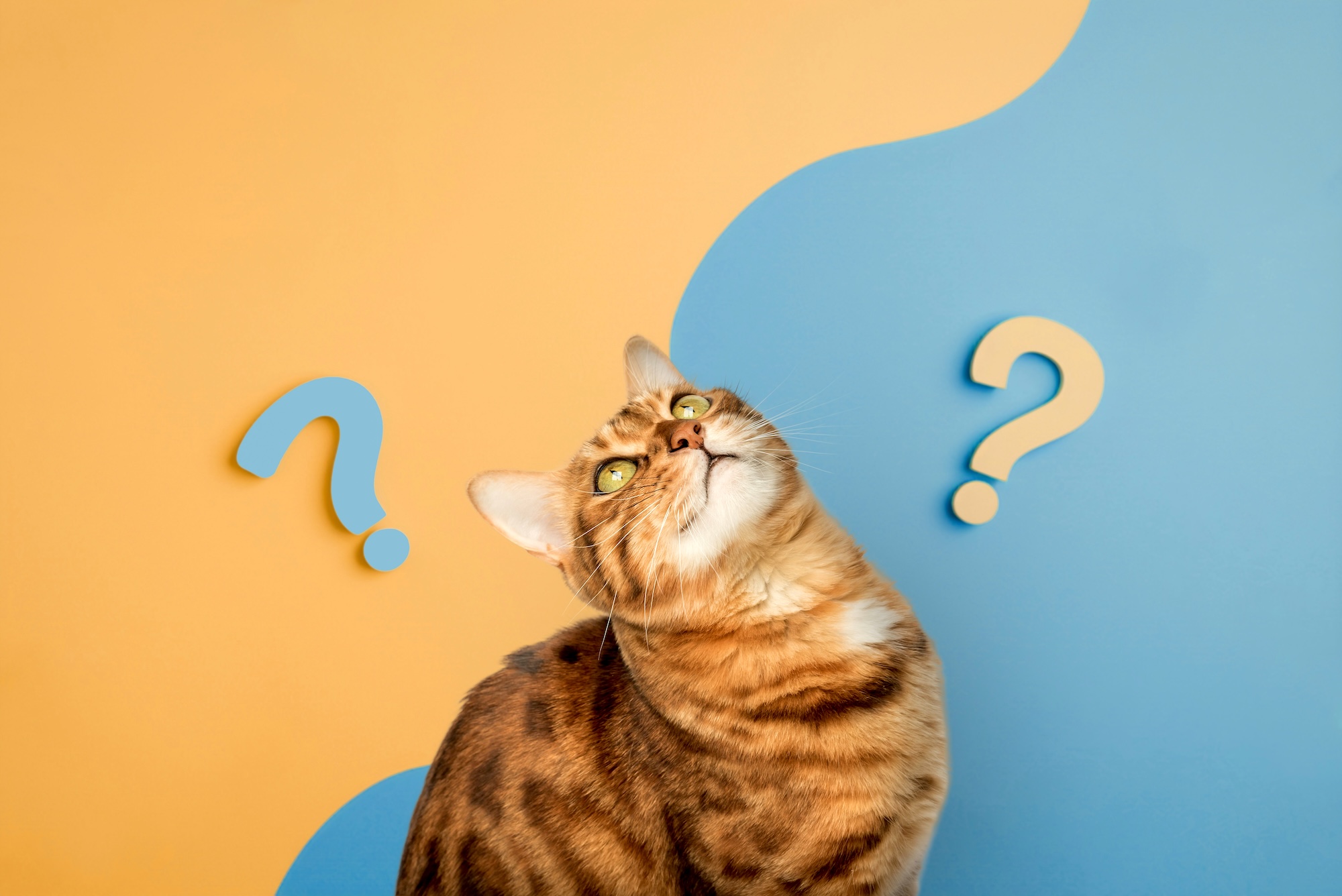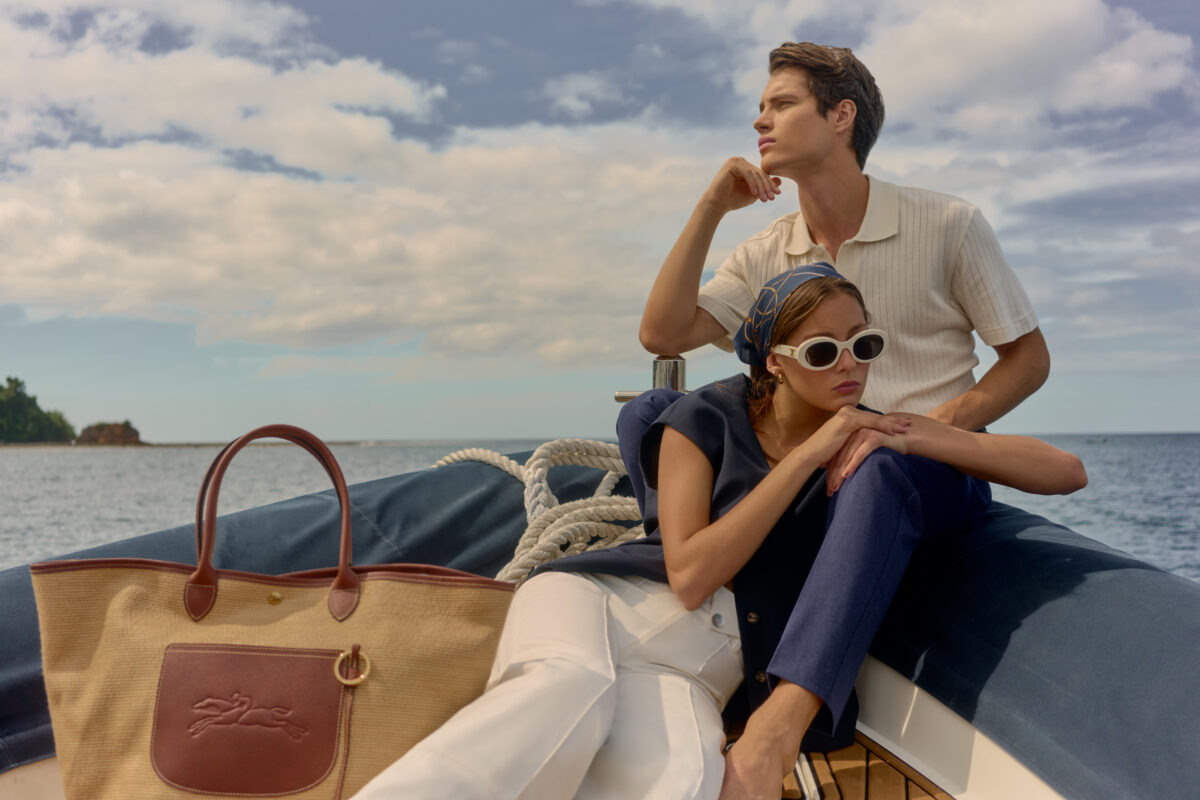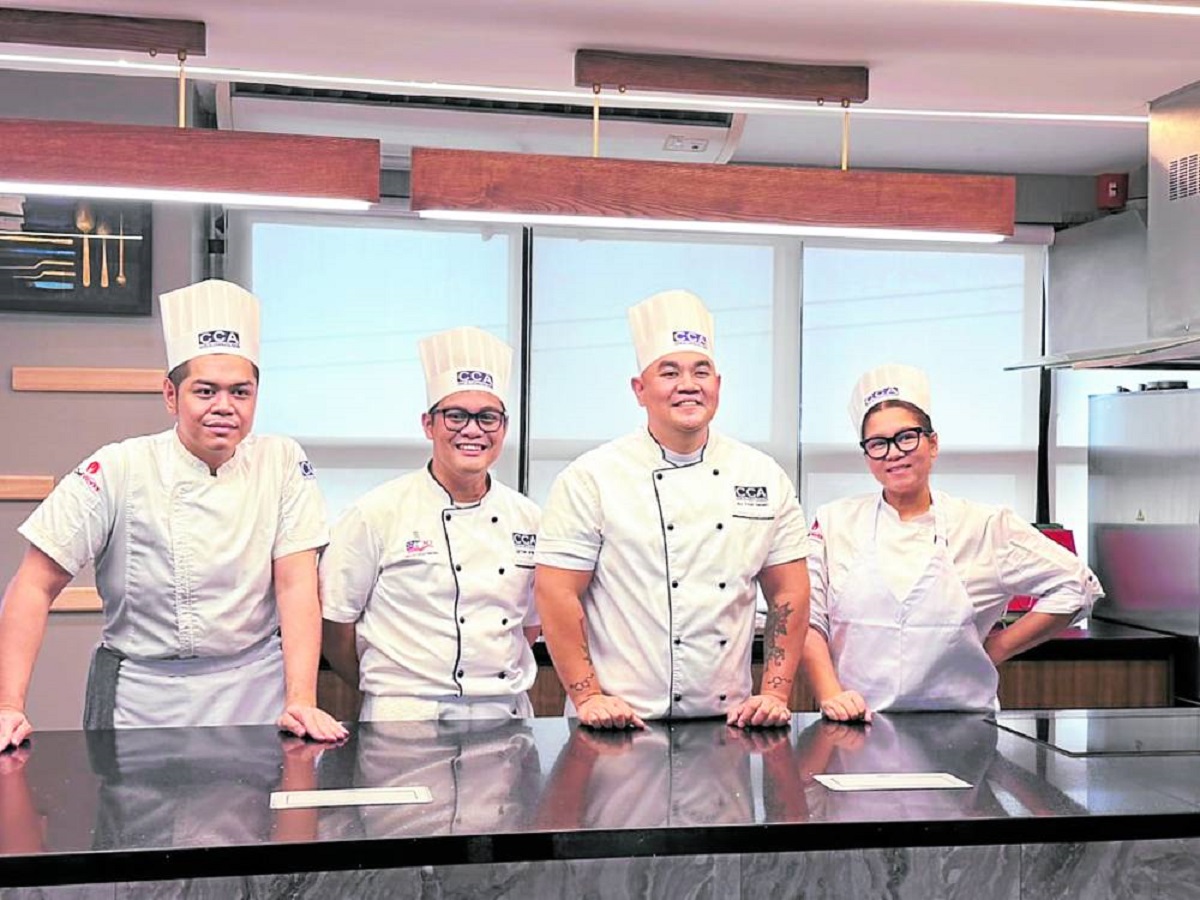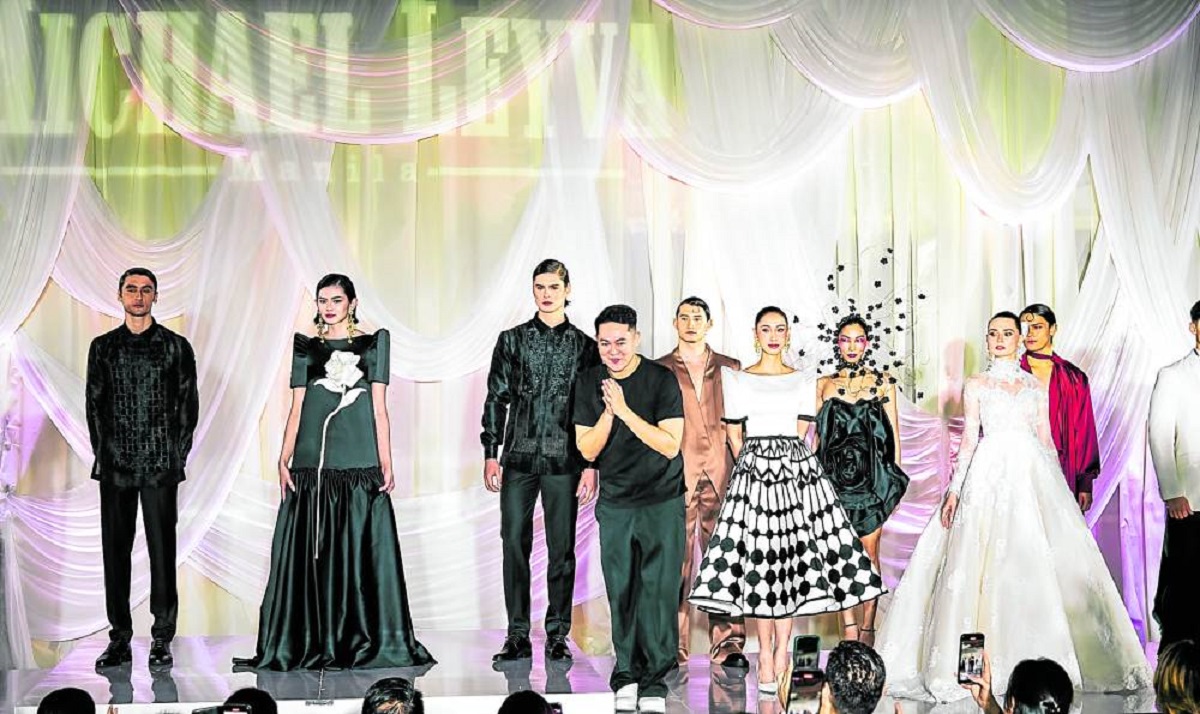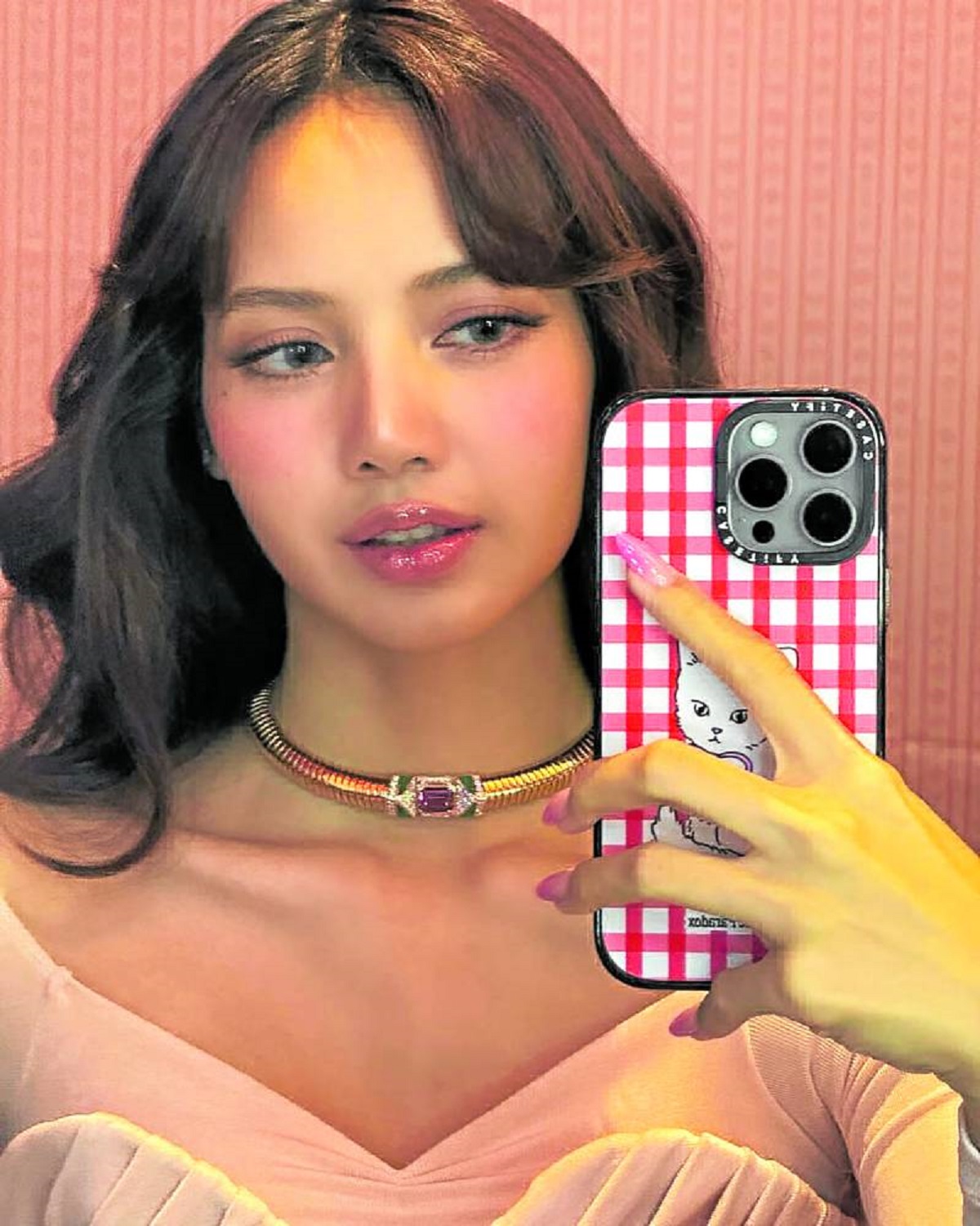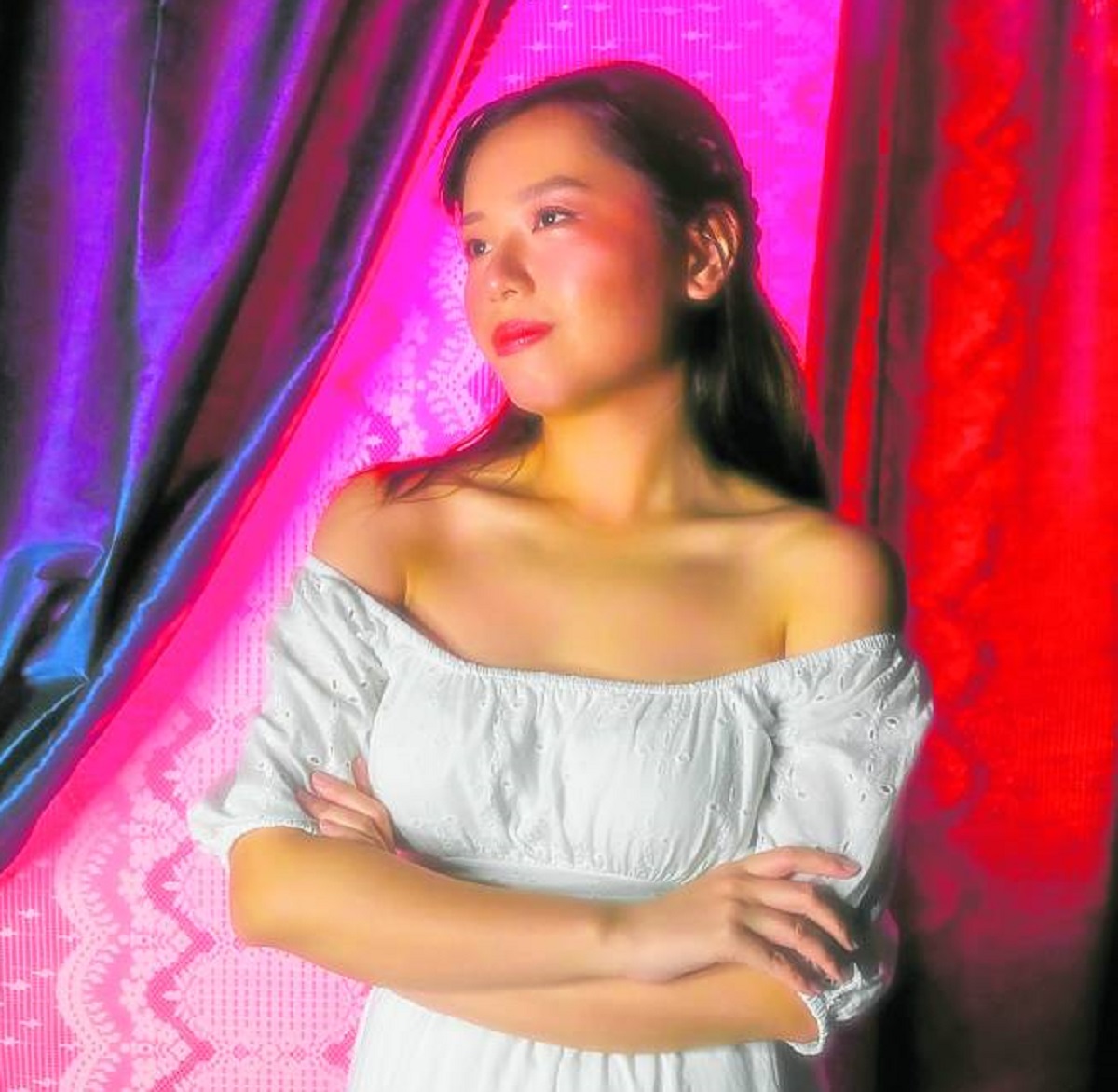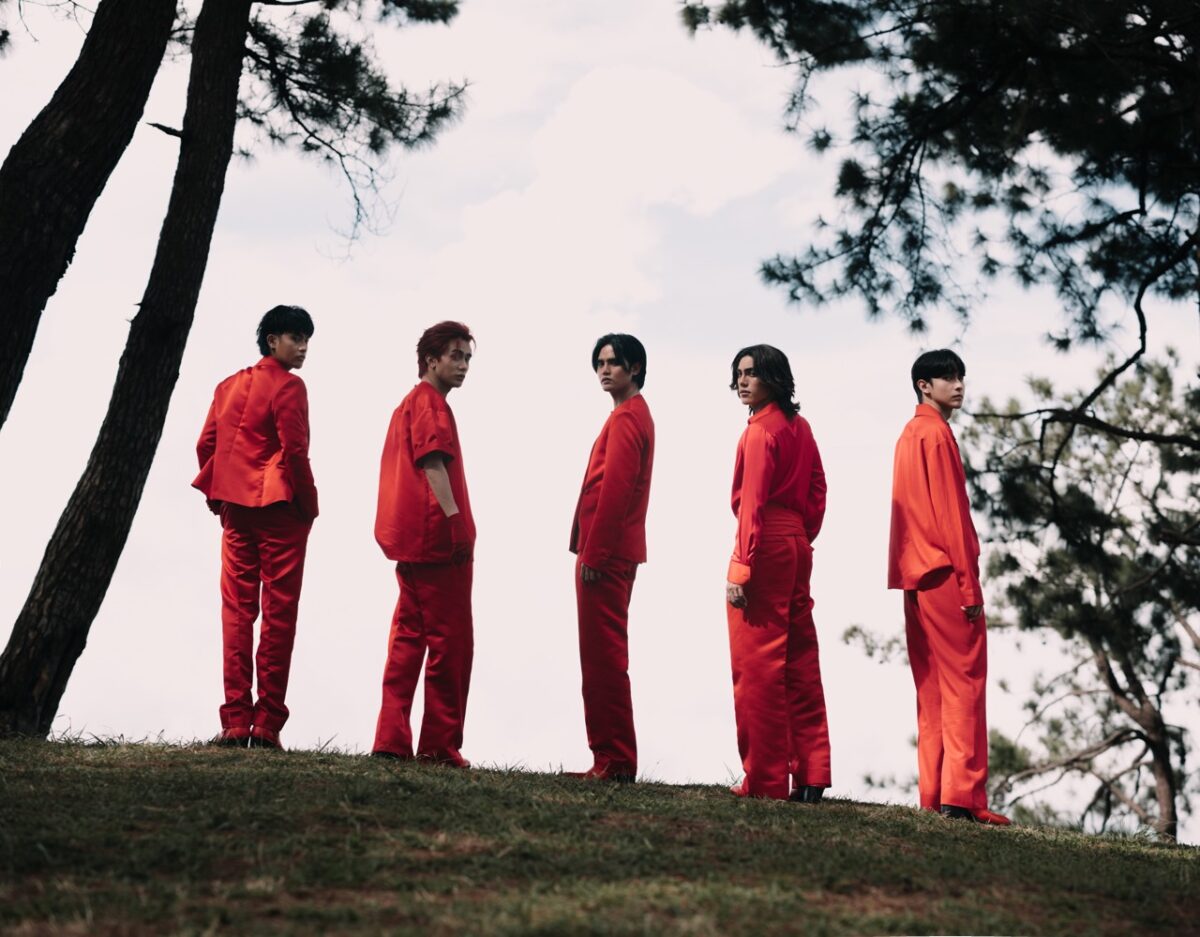Auggie Cordero can laugh about it now, but he still remembers the numbing, disquieting feeling when the realization finally dawned 29 years ago: No one was going to knock on his door anymore. Not today, never mind tomorrow.
It was soon after the Edsa People Power Revolution of 1986, and the dictator Ferdinand Marcos, his family and associates had just fled the country.
For nearly two decades, the fashion designer had enjoyed a steady stream of customers—10 to 20 a day—needing a constant supply of outfits, from day dresses to evening gowns.
The Marcos women were clients. First Lady Imelda Marcos’ coterie of “Blue Ladies”—her unofficial “ladies-in-waiting,” who were the wives of high-ranking government officials or corporate honchos—were regular fixtures at Cordero’s Malate shop.
After Edsa, Cordero sat at his work desk all day, and no one came. There were no more galas and events at the Cultural Center of the Philippines. Gone were the dress-up balls and soirées of the conjugal dictatorship.
Reform was the call of the times. The new mistress of Malacañang stood in stark contrast to the flamboyant consort of her predecessor. And the new administration, the designer felt, could not be bothered about the arts.
“What was I to do? I closed shop,” Cordero said.
Fancy events
When the Marcoses were in power, there was no shortage of fancy events for the people that surrounded them. October to December was the high season. There was an opera and ballet season. And when the event was held at the Cultural Center of the Philippines (CCP), guests were expected to wear formal long gowns. It was the milieu of the country’s elite. Nobody would set foot in the CCP in denims.
The Sona (State of the Nation Address) red carpet event of today? Please! That is nothing!, according to Cordero.
The Marcos years were good times for the fashion designers. Even as Imelda Marcos and her ilk bought French couture, they also patronized Filipino designers. They’d come up with an event when there was none just to have an occasion to dress up. An order of two, three dresses a week from one designer was typical.
The Blue Ladies’ social calendars were always full. Apart from soirées with the First Lady, there were private affairs requiring semiformal wear, cocktail dresses and long gowns. A Blue Lady always had five backup evening wear.
“Those women dressed up that way because that’s how they lived,” said fashion designer Inno Sotto, who didn’t make clothes for the Marcoses when they were in power, but had ex-Blue Ladies for clients. (He made clothes for Imelda Marcos when she was being tried on racketeering charges in New York.)
“They were not Kardashians. How they dressed and looked was not manufactured for anyone, not the paparazzi or social media. It was so different,” Sotto said.
According to Sotto, while Manila’s “high society” now parties and fraternizes with people outside “old money” circles, this was unheard of a generation or two ago. The 30 people they invited to dinner were people they knew intimately because they grew up with them. “It was so much smaller, more exclusive,” he said.
Women of style
The Blue Ladies were noted for being women of style, and they clearly defined what style meant, Sotto said. Even as they went to the same designers, they had their own look. “Now everybody dresses the same and has the same hairstyle,” he said.
While fashion designers today whine about the unavailability of fabrics and materials, in those years everything was available at Divisoria, Cordero said. There was no ready-to-wear to speak of, so even colegialas went to designers and dressmakers, where an A-line dress cost from P20 to P35.
Malacañang itself had a small bodega of fabrics. Whatever else they needed, they got through Rustan’s, owned by Gliceria Tantoco, a Blue Lady. When they needed a dress, the Blue Ladies arrived at the designers’ ateliers with beautifully wrapped lush silks and laces bought abroad.
Immaculate
It was through Imee Marcos that Cordero first got to see and study European couture up close. She brought him her YSL, Grès, Givenchy, Christian Dior, James Galanos—along with gifts of reference books.
The impeccably dressed First Lady expected her gang of DBF (de buena familia) women who moved around with her to look just as immaculate. She didn’t see them as competition; it would have been a feat to actually out-glam someone with that bearing and poise—and that perpetually exquisite coif.
Imelda Marcos dressed for the masses because, as she was quoted as saying, they expected it of her. The ultimate politician’s wife, she mingled with and hugged the poor, and expressly forbade her Blue Ladies from carrying hand sanitizer, Cordero said.
It was highly competitive to be in that circle. When Britain’s Princess Margaret visited in 1980, the Marcoses only had 22 names in the guest list. Even as they had yet to receive an invite, the Blue Ladies already had clothes on order, in case they got lucky.
Apart from her Blue Ladies, Imelda was also very close to her then-best friends, art collector and later wedding stylist Dr. Eleuterio “Teyet” Pascual and fashion designer Jose “Pitoy” Moreno. In fact, the two were also referred to as Blue Ladies, according to Cordero.
It was Moreno who tapped designers for the “Bagong Anyo” fashion shows, a Filipiniana showcase that was created to entertain visiting dignitaries and royalty. Many others said it was also conceived to distract Filipinos from the oppressions of martial law.
To be chosen to participate in the Bagong Anyo was a big deal for designers at the time. “You received a telegram,” said Robert Castañeda, a high-school dropout who first showed in 1974 during the visit of Princess Sofia of Spain.
Replacement
One show could feature the works of up to 50 designers, with a dress each. Popular ones like Moreno, Cordero, Joe Salazar and Rusty Lopez were each assigned “suites”—“Ethnic,” “Manila Today,” “Wedding,” etc.—where they showed more than five pieces each.
But while Moreno drew up the designers’ list, ultimately it was Imelda who called the shots. Sometimes she would call for a dress rehearsal at 5 a.m. If she didn’t like what she saw, she would have the whole thing scrapped and expected the designer to come up with a replacement of the entire collection—on the same day.
“She didn’t yell at you,” Cordero said. “She’d tell you why she didn’t like it, and say, ‘Mahusay ka, kaya mo. (You’re good, you can do it)’ It’s 7 a.m. and the show is at 7 p.m.! Of course, you come up with something. If not, the Metrocom (police) will come knocking!”
For one show, Cordero had to scrap his six gowns—all colored brown—because the First Lady detested the color. It reminded her of the attempt on her life in 1972, when a man dressed in brown attacked her with a bolo.
He also remembered the one time Salvacion Lim Higgins, or Slim, passed out in mortification when she heard the First Lady wanted her to change her collection.
Castañeda also recalled the time Imelda asked another designer to change his all-gold lamé collection on the day of the show. Too Hollywood, she said.
Imelda was also famously not a fan of dusky beauties. On seeing Anna Bayle, who would go on to become an international model, she exclaimed: “Sino yan? Mukhang bisugo. Ilagay sa likod! (Who is that? She looks like a fish. Place her at the back).”
Haute couture client base
It was also during the Marcos era that European couture houses saw the Philippines as a viable client source, with the houses of Lanvin, Valentino, Christian Dior, Pierre Balmain, Nina Ricci, Paco Rabanne and Hanae Mori presenting their couture collections in Manila.
In those days, one paid a ticket to see a fashion show, from P300 for the hotel luncheon shows and up to P5,000 for couture gala shows. If you were invited, you didn’t receive a text like today, Cordero said. An invite was hand-delivered to you.
How the image of the Philippines was represented in the international stage was an obsession of the First Lady, so that no cost was spared. Her “Kasaysayan ng Lahi” grand parade, with up to 120 elaborate floats from all over the country, was legendary.
There was the hosting of the 1974 Miss Universe for which the Folk Arts Theater was built, and the tragic accident during the rushed construction of the Manila Film Center for the Manila International Film Festival (MIFF). For the papal visit in 1981, she required everyone in the Palace, down to the gardeners and maids, to be dressed in white.
When it came to family affairs, Imelda was even more exacting. The best example of this was the wedding of her younger daughter Irene, whose wish for an intimate affair was overruled by her mother.
Eminent artists and individuals like Salvador Bernal and Teyet Pascual were enlisted to make sure everything was picture-perfect for the grand affair, as they transformed the quiet Ilocos hometown of the Marcoses into a picturesque tableau. The bride wore custom Renato Balestra, her mother a Joe Salazar.
Castañeda was tapped to design the uniforms of the staff of the Fort Ilocandia hotel, which was slated to open before the wedding, and where many of the well-heeled guests would be staying. Imelda vetoed the staff uniforms, and decreed that the material be replaced by the inabel Ilocano fabric.
Credit
Designers agree that the Marcos heyday was the golden age of Philippine fashion, but they differ a little on who should be credited for it.
“[Imelda] Marcos was very supportive. It was open to everybody as long as you were creative. And Malacañang wasn’t kuripot, they paid you properly. You had to know the yayas, because it was through them that you sent the statement of accounts,” Cordero said.
“She promoted Philipine fashion,” said Castañeda of Imelda. While he didn’t dress her or any of the Blue Ladies, Castañeda made clothes for the ladies of the Cabinet. He made a gown for Hollywood actress Brooke Shields on her Manila visit in 1983 for the controversial MIFF.
Sotto thinks the glory days were owed more to the likes of collector Luis Ma. Araneta, and Conching Sunico and Chito Madrigal, the individuals responsible for staging luncheon fashion shows at the Hyatt and Hilton hotels, which gave both fledgling and senior designers a venue to showcase their craft.
“It was only magnified by the Marcoses,” Sotto added, what with Imelda and her Blue Ladies being among the top customers of these designers.
In those days, you didn’t just show up for a fashion show. You came because you were a client.
“Ngayon, puro bakla ang audience. Hindi naman magpapagawa ’yan (These days the audience is made of of gay people, who don’t order clothes),” Castañeda said. “I think they just come to see half-naked bodies. Before, if you were there, it meant business,” as designers asked their clients, as a favor, to buy the tables for their shows.
‘Just another Monday’
These designers of the Marcos era find it ludicrous that Filipinos today are falling all over themselves over the terno-clad women of the Sona red carpet—or what Imelda would have referred to in her day as just another Monday.
Even as he sometimes makes clothes for clients attending the Sona, Sotto doesn’t hide his disdain.
“I don’t get it. Why wear evening wear? Why won’t a day dress do? Besides, we’ve tinkered too much with the terno that if you take out the sleeve, it’s a Western dress. Pag uso ang empire cut, nagiging empire.”
“Wala naman ’yan noon (There was no such thing in the Marcos years),” Cordero said of the Sona.
Post-Edsa, Cordero has reclaimed his business, reestablished connections and made new clients. But he remains just a little wistful about those years when he entertained 10 to 20 clients a day.
From the point of view of these fashion designers, “ibang-iba noon.” Those years were so different and, like the glitter and mystique of Imelda, they are forever gone.
RELATED STORIES
Imelda Marcos and the ‘terno’ of her affections
Marcos diaries: ‘Delusions of a dictator’
I saw martial law up close and personal

